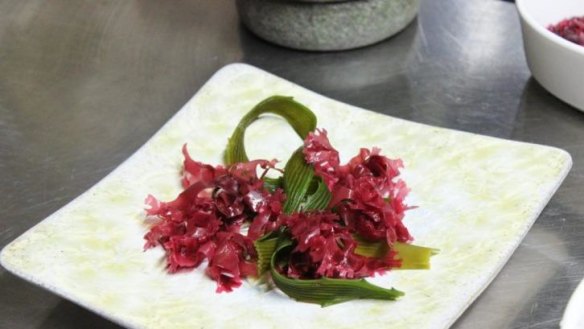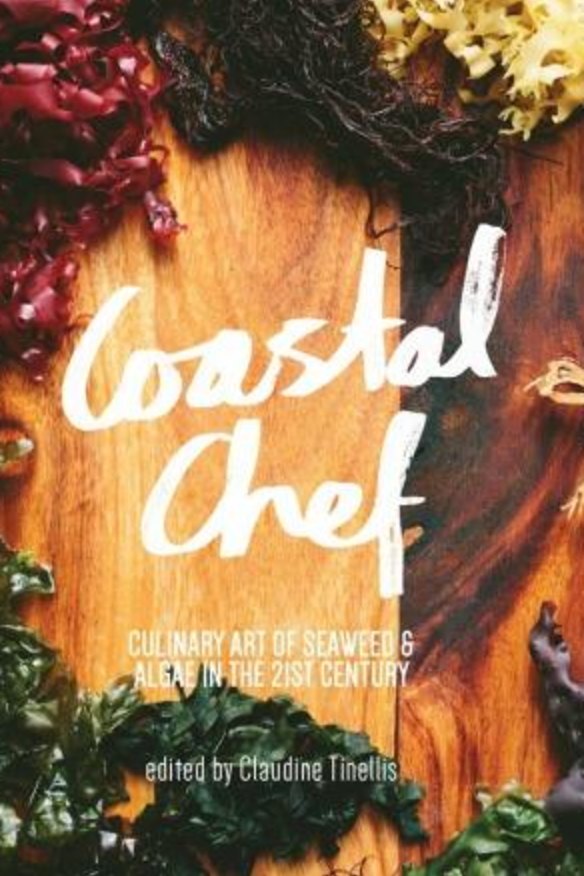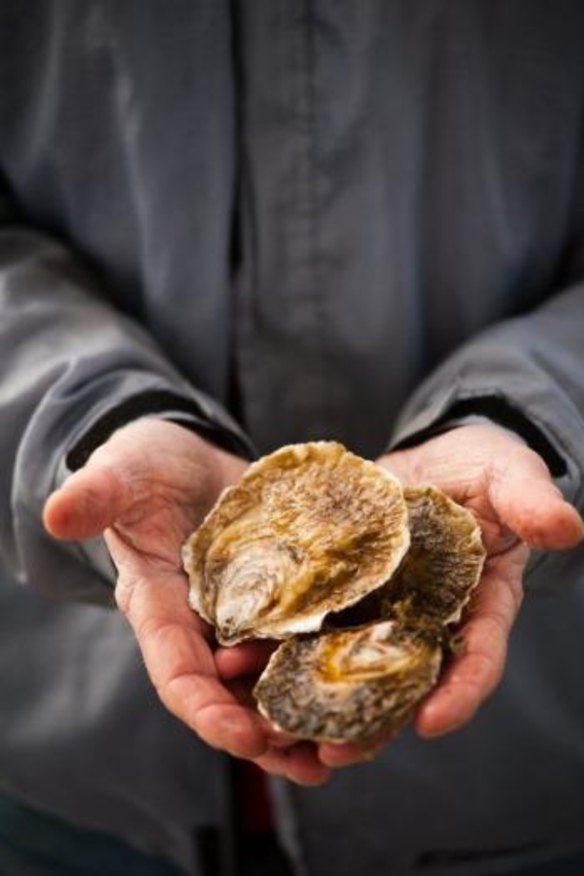Seaweed and algae are to dive for

When the starfish align, one has to flow with the tide. During May a Landline episode was shown on ABC TV called Slimy Harvest. I watched a re-run of the program in the week leading up to the 5th Congress of the International Society of Applied Phycology held in Sydney from June 22-27.
Images of marine biologist Dr Pia Winberg diving for edible seaweeds made one long for the surf, some rock-pooling and a mouthful of nori-wrapped sushi. Winberg is an Honorary Research Fellow at the University of Wollongong and, with a background in sustainable aquaculture systems, she has spent the past 15 years developing and experimenting with seaweed and algae through the company she founded, Venus Shell Systems Ltd. I was hooked.
In June I received a newsletter from Slow Food Canberra that included an invitation from Slow Food Shoalhaven, to an event to celebrate the nomination of the angasi oyster to the Ark of Taste where it has joined leatherwood honey, Pindan walnuts, bunya nuts, rosella jam, finger limes and Davidson’s plums among other edibles. At the event there was an oyster tasting, light supper, glass of wine and a soft sell launch of Coastal Chef: Culinary Art of Seaweed & Algae in the 21st Century ($39.99, advance copies before official launch in October, from harbourpublishing.com.au).

John Olsen is secretary of Slow Food Shoalhaven and, with his wife Jenny Bryant, is a home veggie bed gardener. They follow the Demeter Bio-Dynamic method because, as he says, “if you are going to grow your own vegetables etc and put in that level of effort, you may as well do the ‘gold plated’ version of home growing.”
The couple was attracted to the Slow Food movement and social group, as they get to mix with people with similar food interests and approach to sourcing produce. He says, “there is also the knowledge of members on topics as diverse as picking/preserving, pasta making or picking weeds to cook in pies.”
“Many Canberra folk have a fondness or association with Shoalhaven areas and that Slow Food Shoalhaven, are promoters of the region’s clean, fair food producers. Seaweed from here falls within this parameter,” Olsen says.

At the angasi oyster celebration, Olsen did a taste-off, eating a number of oyster varieties topped with seaweed from Pia Winberg. She had gathered samples of seaweed and algae from sustainable sources around the world and distributed them into ‘'mystery bags'’. Nineteen chefs were recruited to the project and each of them received a bag with three to four samples that were to be used for an innovative entree, main, dessert and/or beverage with seaweed/algae the ‘'hero'’ of the dishes.
You will find all your favourite Ulladulla/Milton restaurants included, Cupitt’s, Bannisters, St Isidore and Tallwood. You’ve probably draped Mermaid’s Necklace algae round your neck, now you can have it as a cocktail garnish or with apple foam and wasabi on angasi oysters. Even Hayden Briger from Hayden’s Pies in Ulladulla added wakame to the brisket in his Wagyu pie.
For kitchen gardeners there is a bonus taste linked to seaweed. Claudine Tinellis, editor of Coastal Chef explained that one of the producers profiled in the book is Seasol, makers of a seaweed-extract based liquid fertiliser. Seasol is applied by kitchen gardeners for its ability to stimulate root development, particularly when transplanting seedlings. It also increases resistance to frost and drought and the ravages of pests and is used by farmers to improve crop harvest.
Seasol worked in conjunction with Millthorpe Free Range Farms in central NSW to produce spectacular Australian purple garlic cultivated with seaweed, including Australian bull kelp. The seaweed-enhanced garlic was used by chefs in the dishes they created for Coastal Chef including fish steamed over seaweed with sake, Moreton Bay bug tails and ulva pappardelle and clams.
Tinellis says one of the main aims of the book is to educate readers about the health benefits of habitual consumption of seaweed and algae and that means more than a sushi roll. This is an exciting book for its health benefits, imagination, superb photography and, as Dr Rosemary Stanton says in the foreword, “Perhaps the most valuable aspect of using seaweed is that it can help direct attention to the need to maintain a clean marine environment.” Let’s dive to that.
Susan Parsons is a Canberra writer.
Restaurant reviews, news and the hottest openings served to your inbox.
Sign up